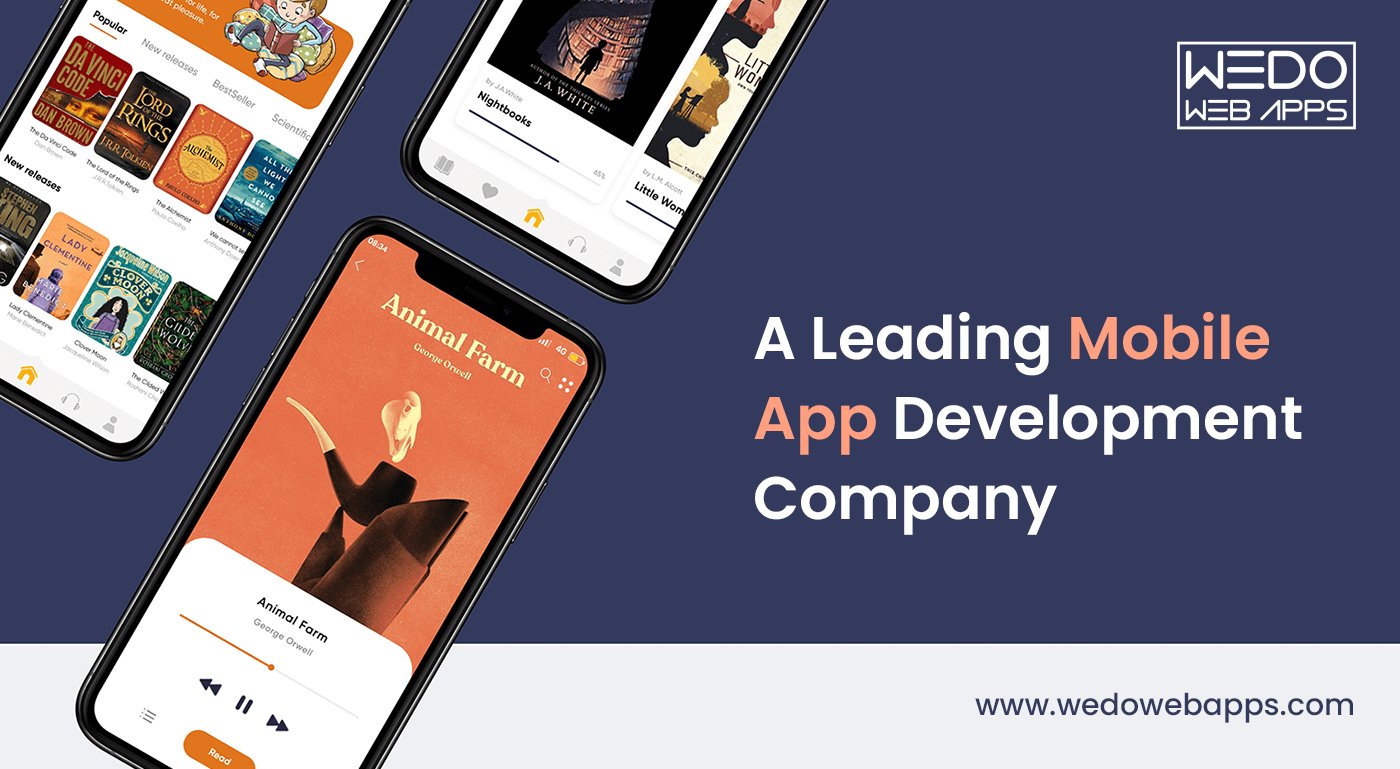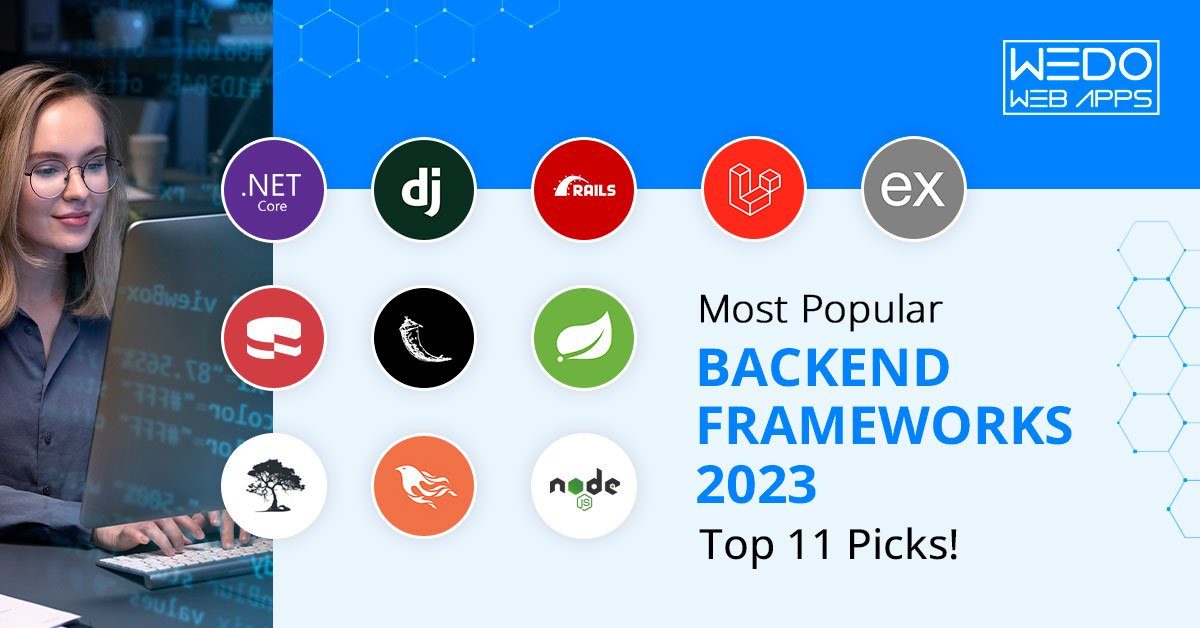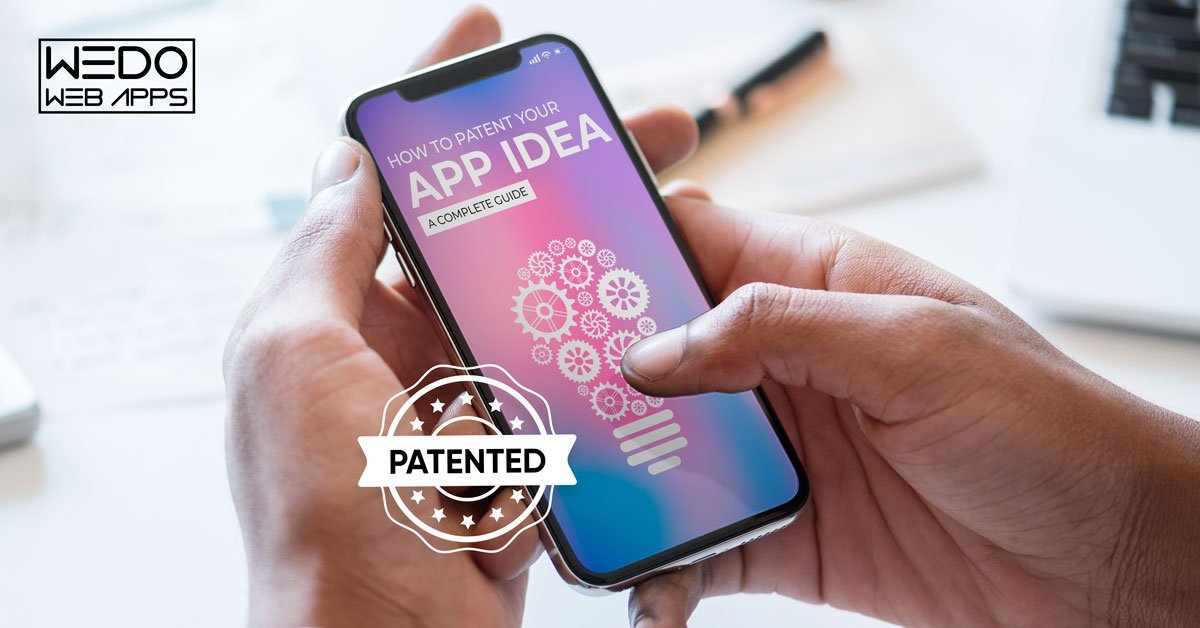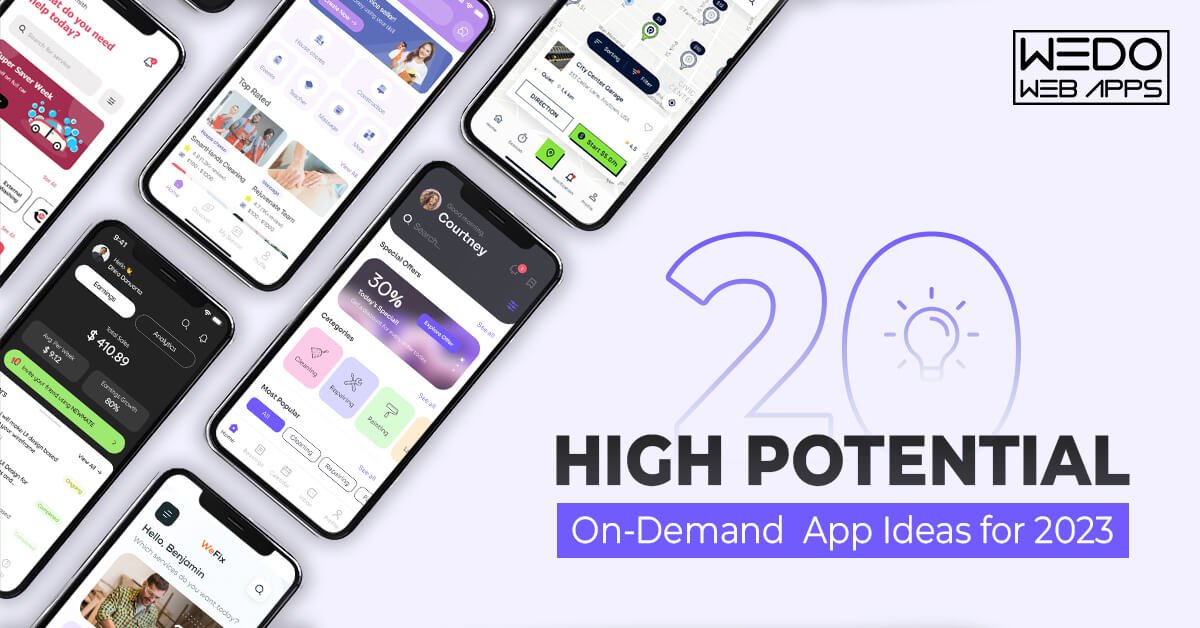In today’s fast-paced world, people are always looking for ways to save time and get things done without having to leave their homes. This is where on-demand service apps come in. On-demand service apps allow users to request a variety of services, from food delivery to ride-hailing to home cleaning, with just a few taps on their smartphones. As the best mobile app development company in the USA, we provide a range of on-demand app development services.
What are on-demand service apps?
On-demand service apps are a type of mobile app that allows users to request a service from a provider. These apps typically use a geolocation service to find providers who are nearby. Once a provider is found, the user can then request a service and pay for it through the app.
Why are on-demand service apps so popular?
There are a few reasons why on-demand service apps are so popular. First, they are convenient. With on-demand service apps, users can have food delivered to their door, a ride to the airport, or a home cleaned without having to spend time calling or driving to a service provider. Second, on-demand service apps are often more affordable than traditional methods of getting things done. For example, on-demand food delivery apps often charge a lower delivery fee than restaurants do for in-house dining. Third, on-demand service apps offer a wider range of options than traditional methods. For example, on-demand ride-hailing apps allow users to choose from a variety of vehicles, including cars, SUVs, and vans.
What are the various types of on-demand service apps?
There are many different types of on-demand service apps available. Some of the most popular on-demand app types include:
Food delivery apps: These apps allow users to order food from restaurants and have it delivered to their homes or offices. Some popular food delivery apps include Uber Eats, Grubhub, and DoorDash.Ride-hailing apps: These apps allow users to request rides from drivers who are nearby. Some popular ride-hailing apps include Uber, Lyft, and Sidecar.Home cleaning apps: These apps allow users to schedule home cleaning services. Some popular home cleaning apps include Handy and TaskRabbit.Pet care apps: These apps allow users to find pet sitters or dog walkers. Some popular pet care apps include Rover and Wag!Laundry and dry cleaning apps: These apps allow users to schedule laundry and dry cleaning pick-up and drop-off. Some popular laundry and dry cleaning apps include Washio and Rinse.
How to choose the right on-demand service app?
When choosing an on-demand service app, there are a few things to keep in mind:
The type of service you need: Make sure the app you choose offers the type of service you need. For example, if you need food delivered, make sure the app you choose offers food delivery services.
The availability of providers: Make sure there are providers available in your area. For example, if you live in a rural area, you may not have as many options for food delivery apps as someone who lives in a city.
The cost of the service: Compare the costs of different apps to find the most affordable option. For example, some food delivery apps charge a delivery fee, while others do not.
The reviews of other users: Read reviews of other users to get an idea of the quality of the service. For example, you can read reviews of food delivery apps on Google Play or the App Store.
The future of on-demand service appsThe future of on-demand service apps looks bright. As more and more people adopt these apps, the market for on-demand services is expected to grow. This growth will create new opportunities for businesses and entrepreneurs who are looking to get involved in the on-demand economy.
If you are looking for a way to save time and get things done, on-demand service apps are a great option. With so many different types of apps available, you are sure to find one that meets your needs.
Here are some of the benefits of using on-demand service apps:
- Convenience: On-demand service apps allow you to get things done without having to leave your home or office. For example, if you are running late for work and you need to get breakfast, you can use a food delivery app to have food delivered to your office. Or, if you are having a party and you need someone to clean up, you can use a home cleaning app to schedule a cleaning service.
- Affordability: On-demand service apps are often more affordable than traditional methods of getting things done. For example, on-demand food delivery apps often charge a lower delivery fee than restaurants do for in-house dining. Or, if you need to get a ride to the airport, you can use a ride-hailing app to get a ride for a fraction of the cost of a taxi.
- Variety: There are many different types of on-demand service apps available, so you can find one that meets your specific needs. For example, if you need to get groceries delivered, you can use a grocery delivery app. Or, if you need to have your car washed, you can use a car washing app.
- Quality: On-demand service providers are held to high standards, so you can be confident that you will receive a quality service. For example, on-demand food delivery apps require their drivers to pass background checks and to maintain a certain level of customer satisfaction.
If you are looking for a convenient, affordable, and reliable way to get things done, on-demand service apps are a great option. With so many different types of apps available, you are sure to find one that meets your needs.
Here is the List of 20 On-demand Mobile App Ideas you must know
Mobile applications have become increasingly popular in recent years due to the rise of smartphones and tablets. A mobile app idea can be a great way for service providers to start a business or expand an existing one, catering to people’s needs for food and restaurant services. With so many different types of mobile apps, including video streaming apps, social networking apps, and more, it can be challenging to come up with the best on-demand app ideas. Developing a mobile app requires careful planning and consideration of user needs and preferences.
Here is a list of 20 on-demand mobile app ideas that could potentially be successful in today’s market, catering to various needs such as service providers, food, restaurants, and beauty services.
1. On-demand Uber-like Apps for Traveling
An on-demand mobile app that has gained immense popularity is the Uber-like app for traveling. This app provides a hassle-free way for users to book transportation services from one area to another. Whether it’s a ride to the airport, a trip across town, or a long-distance journey, this on-demand travel app can cater to all your travel needs. The app comes with an array of features such as real-time tracking, estimated arrival times, and secure payment options that have revolutionized the way people travel. The real-time tracking feature allows users to track their ride in real-time, ensuring that they are aware of their ride’s exact location and ETA. The estimated arrival time feature gives users an approximate time of their ride’s arrival, ensuring that they are ready when their ride arrives. Secure payment options provide users with a convenient and safe way to pay for their rides. Additionally, this app can also help users find nearby restaurant options and order food for delivery while on the go.
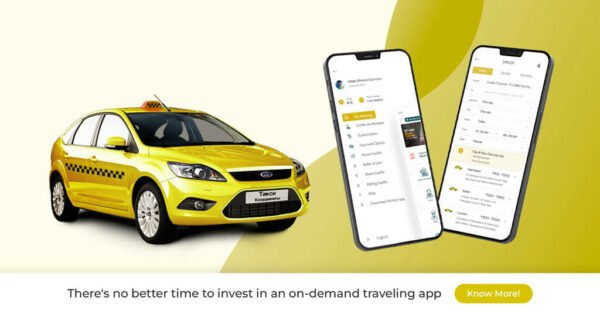
Apart from traditional ride-hailing services, some on-demand travel apps also offer options for booking flights, hotels, restaurants, and other travel-related services. These apps provide people with a one-stop shop for all their travel needs in the area they are visiting. Users can book their flights, reserve hotel rooms, find nearby restaurants, and even plan their itinerary using these apps. This feature is particularly useful for travelers who want to plan their entire trip in one go, especially during snow season. With just a few clicks, users can book their flights, reserve hotel rooms, find nearby restaurants, plan their itinerary, and make sure they are well-prepared for the snow without having to switch between different apps.
In conclusion, the Uber-like app for traveling is an excellent on-demand app idea that has transformed the way people travel. With features like real-time tracking, estimated arrival times, and secure payment options, these apps provide users with a convenient and hassle-free way to book transportation services. Additionally, some on-demand travel apps also offer options for booking flights, hotels, and other travel-related services. Some apps also allow users to discover nearby restaurants, snow activities, and water sports, making them a one-stop shop for all your travel needs.
2. On-demand Pharmacy Delivery Apps
On-demand pharmacy delivery apps are revolutionizing the healthcare industry by providing a convenient and accessible service business idea for users to order prescription medications and over-the-counter products from their smartphones. These apps have been gaining popularity in recent years, especially with the rise of e-commerce and the need for contactless delivery options due to the ongoing pandemic. The demand for on-demand pharmacy delivery apps has increased significantly as people prefer to stay at home and avoid crowded places. While these apps are transforming the way we access healthcare, other service business ideas like laundry service are also adapting to the changing times by offering contactless delivery options. Additionally, it’s important to remember that staying hydrated is crucial for our health, which is why on-demand delivery services for water are also becoming more popular among consumers.
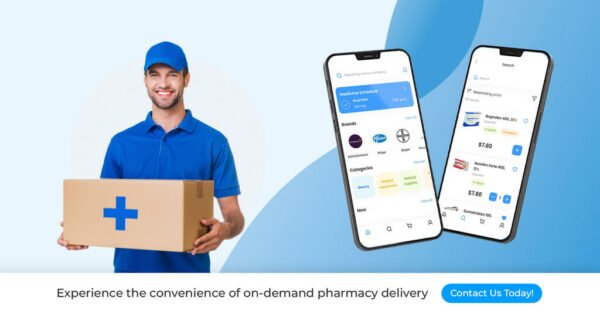
One of the significant advantages of using on-demand pharmacy delivery apps as a service business idea is that people can easily order their required medications or products without leaving their homes. They don’t have to worry about waiting in long queues or traveling to the pharmacy store, which can be time-consuming and tiring. Moreover, these apps provide users with an option to track their orders in real time, ensuring that they receive their products on time.
For service businesses looking for new ideas, on-demand delivery apps can be a game-changer. By automating the ordering and delivery process, these apps can help streamline operations and manage inventory more efficiently. This can help businesses serve people more effectively and expand their customer base by reaching out to a broader audience who prefer the convenience of online shopping.
In conclusion, on-demand pharmacy delivery apps are a lucrative business idea with significant potential for growth. They offer numerous benefits to both users and pharmacies, making them an attractive option in today’s fast-paced world. As the healthcare industry continues to evolve, these apps will undoubtedly play a crucial role in providing accessible and convenient healthcare services to people worldwide.
3. On-demand Fashion Apps
The rise of on-demand fashion apps can be attributed to the convenience and efficiency they offer to customers. With the increasing number of people turning to online shopping for their clothing needs, these apps provide a one-stop shop for browsing and purchasing clothing items from various retailers. In addition, some on-demand fashion apps have taken personalization to another level by offering personalized styling services based on user preferences and body type. This feature helps users save time and effort in choosing outfits that suit their style and body shape.
The convenience of on-demand delivery is another factor that has contributed to the popularity of these apps among people. Customers can receive their orders quickly and easily, eliminating the need for them to physically visit stores or wait for long shipping times. Moreover, many on-demand fashion apps have integrated social features that allow people to share their outfits and fashion tips with others in the community. This not only creates a sense of community but also provides people with inspiration and ideas for different outfit combinations.

On-demand fashion apps have also become a platform for small businesses, independent designers, and people to showcase their products to a wider audience. This has led to an increase in diversity in terms of fashion styles and brands available on these platforms. As such, people can discover new brands and unique pieces that they may not have found otherwise.
In conclusion, on-demand fashion apps have revolutionized the way people shop for clothing. They offer convenience, personalization, social interaction, and access to a diverse range of fashion styles and brands. As online shopping continues to grow, it is expected that these apps will continue to gain popularity and provide even more innovative features for users.
4. On-demand Health Apps
On-demand health apps have emerged as a game-changer in the healthcare industry, catering to the needs of individuals who are looking for hassle-free and convenient healthcare services. These apps offer a wide range of services, including virtual doctor consultations, medication delivery, and fitness tracking. Virtual consultations with doctors have become increasingly popular, especially during the COVID-19 pandemic, as people are hesitant to visit hospitals or clinics. With on-demand health apps, users can access medical care from the comfort of their own homes. This not only saves time but also ensures safety and reduces the risk of exposure to infections.
Moreover, on-demand health apps provide people with personalized recommendations and reminders that help them stay on top of their health goals. These apps use advanced algorithms and machine learning techniques to analyze people’s data and provide customized recommendations based on individual health conditions and preferences. For instance, if a person wants to lose weight, the app will suggest a personalized diet plan and exercise routine based on their body mass index (BMI) and other health factors.

The on-demand health app market is growing rapidly as more people are looking for accessible and affordable healthcare services. According to a report by Grand View Research, the global on-demand healthcare market is expected to reach USD 460.9 billion by 2027, growing at a CAGR of 26.3% from 2020 to 2027. The increasing adoption of smartphones and mobile devices, coupled with advancements in telemedicine technology, is driving the growth of this market.
In conclusion, on-demand health apps are revolutionizing the healthcare industry by providing convenient and accessible healthcare services to people. With the increasing demand for virtual consultations and personalized healthcare services, these apps are set to become an integral part of the healthcare ecosystem in the years to come, benefiting people from all walks of life.
5. On-demand Plumbing Apps
Plumbing emergencies can be a nightmare for homeowners, renters, and people in general, as they can happen at any time and cause significant damage if not addressed quickly. The traditional method of finding a plumber involves searching through directories, making phone calls, and hoping that someone is available to fix the issue. However, with the advent of on-demand plumbing apps, this process has become much more convenient. These apps allow people to connect with licensed plumbers who are available to fix any plumbing issue, from leaky faucets to burst pipes.
One of the key advantages of on-demand plumbing apps is their ease of use for people. Users can download the app, create an account, and request a plumber within minutes. The app will then connect them with a licensed plumber who is available in their area. People can view the plumber’s profile, which includes their qualifications and ratings from previous customers.
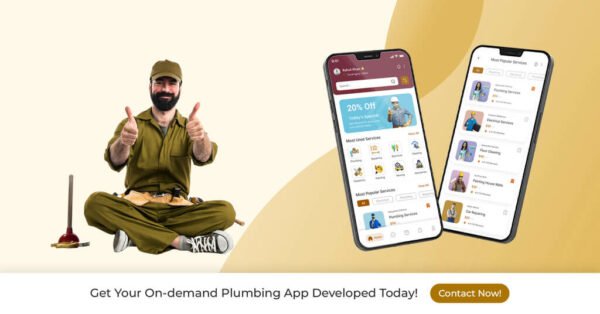
Another advantage of on-demand plumbing apps is that they provide real-time tracking of the plumber’s location. This means that people can see exactly where the plumber is and when they will arrive at their location. This feature provides peace of mind to people who may be worried about the plumber not showing up or taking too long to arrive.
Finally, on-demand plumbing apps provide a secure payment system that allows people to pay for services directly through the app. This eliminates the need for cash transactions and ensures that payments are made securely and efficiently, giving people peace of mind when using the app.
In conclusion, on-demand plumbing apps provide a convenient solution for people who need quick and efficient plumbing services without the hassle of searching for a reliable plumber. With their ease of use, real-time tracking, and secure payment system, these apps are becoming increasingly popular among people in need of emergency plumbing services.
6. On-demand Mechanics Apps
On-demand mechanics apps can be a game-changer for people in the automobile industry. The convenience of having a mechanic come to the customer’s location is unparalleled, making it easier for people to get their cars repaired. This eliminates the need for car owners to travel to a mechanic’s workshop and wait for hours until their car is repaired. With on-demand mechanics apps, people can schedule an appointment at their preferred time and location, making it a hassle-free experience.
Moreover, these apps ensure that people who need car repair services can easily connect with certified and background-checked mechanics, giving customers peace of mind. The app can also offer real-time updates on the repair progress, so people can keep track of what’s happening with their car. Additionally, many on-demand mechanics apps offer estimates of repair costs upfront, so people know what they’re getting into before agreeing to anything.
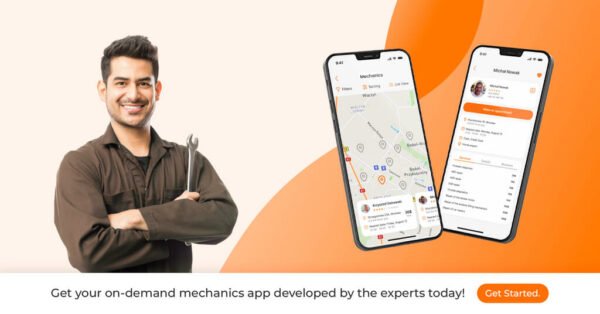
Furthermore, on-demand mechanics apps can offer secure payment options, making transactions hassle-free and transparent for people. Customers can pay through the app using their preferred payment method, whether it’s a credit card or digital wallet. This eliminates any concerns about carrying cash or being overcharged by unscrupulous mechanics, giving people peace of mind.
As the number of people owning cars continues to rise, on-demand mechanics apps have a huge potential market. This presents an excellent opportunity for entrepreneurs looking to enter the automobile industry and cater to the needs of these people. By providing a convenient and reliable service, on-demand mechanics apps can be a profitable business venture for those who want to serve this growing population.
7. On-demand Plant Delivery Apps
On-demand plant delivery apps have become a popular choice for individuals who are looking to add some greenery to their homes or workspaces. These apps provide an easy and convenient way to purchase plants without having to leave the comfort of your own home. With the increasing popularity of indoor plants, there is a growing demand for a wide variety of plants that can be delivered right to your doorstep. These apps offer an extensive selection of plants ranging from small succulents to larger trees, making it easy for users to find the perfect plant that suits their needs.
One of the significant advantages of using an on-demand plant delivery app is the ability to choose the perfect pot or planter to match your decor. These apps offer a wide range of pots and planters in various colors, sizes, and materials, allowing users to select the one that best suits their style and preferences. Moreover, these apps can provide care instructions and tips on how to keep plants healthy and thriving. This feature is particularly helpful for individuals who may not have extensive knowledge about plant care but still want to enjoy the benefits of having indoor plants.

Another advantage of using a mobile on-demand plant delivery app is the convenience it provides. Users can easily browse through different plants and place an order with just a few clicks on their mobile apps. The app will then handle the rest, including packaging and delivery. This feature saves users time and effort while also ensuring that their plants arrive in excellent condition through their mobile apps.
Overall, on-demand plant delivery apps have the potential to be a successful business venture in the current market. With the increasing demand for indoor plants and the convenience these apps provide, they offer an excellent opportunity for entrepreneurs looking to start a new business or expand their existing one.
8. On-demand Beauty Service Apps
On-demand beauty service apps are revolutionizing the beauty industry by providing a convenient and efficient way for people to get their beauty treatments done. These apps offer a variety of services such as hair styling, makeup application, manicures, pedicures, and even massages. Users can browse through the app’s database of professional stylists, makeup artists, and nail technicians and choose the one that best suits their needs. Many of these professionals have years of experience in the beauty industry and have worked with high-profile clients, making them experts in their field.
One of the biggest advantages of using on-demand beauty service apps is the convenience they offer. Users can book an appointment with just a few clicks on their smartphone or tablet and have a professional come to their home or office at a time that suits them. This eliminates the need to travel to a salon, wait in long queues, or deal with traffic during peak hours. Moreover, many of these apps offer real-time tracking of the professional’s location, so users can see exactly when they will arrive.

Another advantage of on-demand beauty service apps for us is that they provide job opportunities for freelance beauty professionals in the United States. Many of these professionals work as independent contractors, which allows them to set their own schedules and work as much or as little as they want. This flexibility is particularly important for those who have other commitments such as family or school.
Overall, on-demand beauty service apps are a win-win solution for both customers and professionals. Customers get quality services at their convenience while professionals get to earn extra income doing what they love. With the rise of technology and changing consumer behavior, it is no surprise that these apps are becoming increasingly popular in the beauty industry.
9. On-demand House Cleaning Apps
On-demand house cleaning apps have become a popular solution for people who struggle to find time to keep their homes clean. These apps have revolutionized the traditional house cleaning industry by offering an easy-to-use platform that connects users with professional cleaners. Users can schedule a cleaning service at their convenience, without having to worry about the hassle of finding and coordinating with a local cleaning company.
One of the biggest advantages of on-demand house cleaning apps is the variety of services they offer. In addition to basic cleaning services, many apps also provide deep cleaning, laundry, and organizing services. This allows users to customize their cleaning experience based on their specific needs and preferences. Furthermore, these apps often employ highly experienced and trained professionals who can provide high-quality services that meet the expectations of even the most demanding customers.
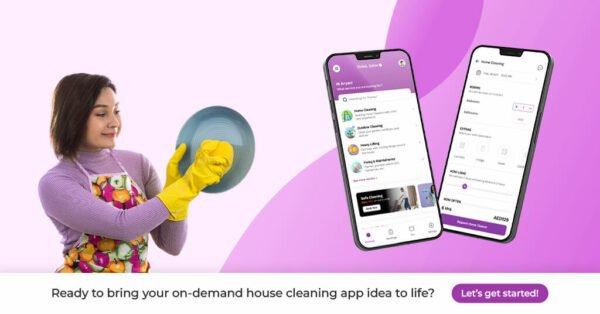
To succeed in the on-demand house cleaning app industry, entrepreneurs must focus on providing reliable and high-quality services through their mobile apps. This involves recruiting experienced and trustworthy cleaners, as well as developing a strong customer service team that can handle any issues or concerns that may arise on the app. Additionally, pricing is a crucial factor in attracting and retaining customers through mobile apps. Offering competitive pricing and flexible scheduling options can help entrepreneurs stand out in a crowded market of mobile apps for house cleaning.
Overall, the on-demand house cleaning mobile apps market presents a great opportunity for entrepreneurs looking to enter the industry. With the growing demand for convenient and efficient services, there is plenty of room for new players to make a splash and carve out a niche for themselves. By focusing on providing reliable, high-quality services through mobile apps at competitive prices, entrepreneurs can build a loyal customer base and establish themselves as leaders in this exciting and rapidly evolving industry.
10. On-demand Dog Walking Apps
For dog owners, finding time to take their furry friends for a walk can be a challenge, especially for those with busy schedules. On-demand dog walking apps offer a practical solution by connecting dog owners with professional dog walkers in their vicinity. These apps provide dog owners with the convenience of scheduling walks for their dogs at any time, whether it’s a regular daily walk or an occasional one-time request. The on-demand service also benefits dog walkers, who can enjoy the flexibility of working according to their schedule and earning money while doing what they love.
On-demand dog walking apps have become increasingly popular in recent years, thanks to the growing number of dog owners in urban areas. With these apps, dog owners can easily find reliable and trustworthy dog walkers who have been vetted and trained to ensure the safety and well-being of their furry companions. The apps usually provide detailed information about dog walkers, including their experience, qualifications, and reviews from other customers.
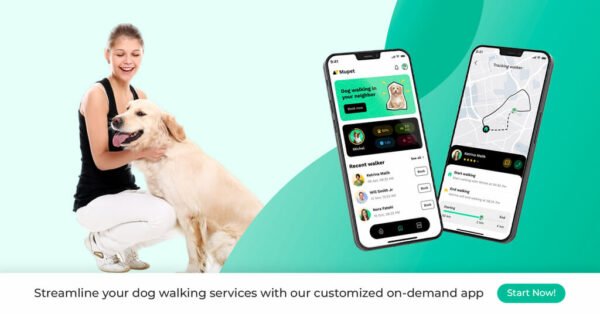
One of the advantages of on-demand dog-walking apps is that they offer a level of convenience that traditional dog-walking services cannot match. Dog owners can schedule walks for their dogs at any time, even at short notice, without having to worry about long-term contracts or commitments. This flexibility is particularly useful for people with unpredictable work schedules or those who travel frequently.
In addition to providing a convenient service for busy dog owners, on-demand dog walking apps also offer an attractive business opportunity for aspiring entrepreneurs. With low start-up costs and high demand, these apps have the potential to generate substantial revenue while providing a valuable service to the community. As more people adopt dogs as pets, the demand for on-demand dog walking services is expected to continue growing in the coming years.
11. On-demand Grocery App
The on-demand grocery app is a revolutionary idea that is gaining popularity among busy individuals and families. With the rise of online shopping and home delivery services, this app can be a game-changer for those who want to avoid the hassle of going to the grocery store. The app offers a user-friendly platform where users can easily order groceries online and have them delivered straight to their doorstep. This convenience is especially beneficial for those who have busy schedules or simply don’t want to spend time in the store.
The demand app can offer a wide range of products including fresh produce, meat, dairy, and pantry staples. This means that users can easily find everything they need for their daily cooking and household needs without ever leaving their homes. Additionally, the app can provide users with the option to schedule deliveries for a specific time and date that works best for them. This feature ensures that users receive their orders at a convenient time, without having to worry about being at home all day. For those in need of demand laundry service or beauty services, the app can also provide these options. However, demand insurance is not currently available through the app.
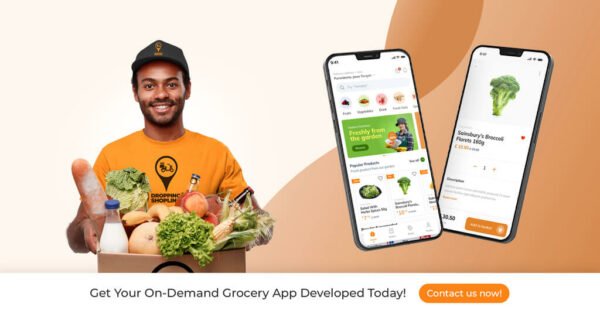
Furthermore, an on-demand grocery app can also benefit local businesses by providing them with a new platform to sell their products. The app can partner with local farmers and vendors to offer fresh and locally sourced produce to users. This not only supports local businesses but also promotes sustainable practices by reducing carbon emissions associated with transportation.
In conclusion, an on-demand grocery app has the potential to become a successful business venture due to its convenience, variety of products, and potential partnerships with local businesses. As the demand for online shopping and home delivery services continues to grow, this app can be a great opportunity for entrepreneurs looking to invest in a profitable business idea.
12. On-demand Video Streaming App
On-demand video streaming apps have become increasingly popular in recent years due to the rise of streaming services like Netflix, Hulu, and Amazon Prime Video. With the convenience of being able to watch your favorite shows and movies anytime, anywhere, it’s no surprise that there is a huge demand for this type of content. If you’re considering developing an on-demand video streaming app, there are a few things to keep in mind. Firstly, it’s important to offer unique features or content that sets your app apart from the competition. Consider partnering with independent filmmakers or content creators to offer exclusive content that can’t be found anywhere else. This will not only attract users but also help establish your brand as a leader in the industry.
Another way to increase user engagement and retention is by incorporating social features such as user-generated playlists and recommendations. This will allow users to share their favorite content with friends and family, creating a sense of community within your app. However, it’s important to keep in mind that licensing rights for popular movies and TV shows can be expensive. It’s crucial to research and budget accordingly before committing to any licensing agreements. Adding these features can also be beneficial for demand apps and demand laundry services.
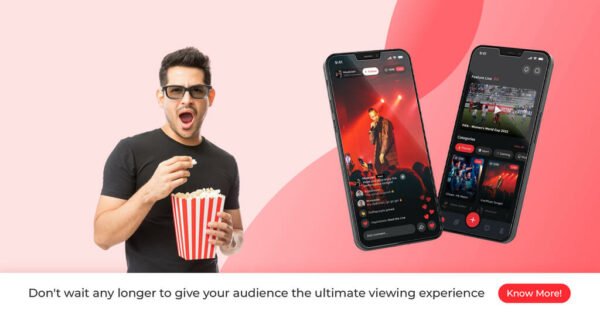
Furthermore, it’s important to consider the technical aspects of developing an on-demand video streaming app. You’ll need a reliable and scalable infrastructure to support high-quality video streaming without buffering or lagging issues. Additionally, you’ll need to ensure that your app is compatible with various devices, including smartphones, tablets, smart TVs, and gaming consoles.
In conclusion, developing an on-demand video streaming app can be a lucrative business idea if done correctly. By offering unique features or content, incorporating social features, researching licensing rights, and considering technical aspects, you can create an app that stands out in the crowded market.
13. On-demand E-learning App
The education industry has been transformed by the rise of e-learning. With the increasing popularity of on-demand learning, an on-demand e-learning app could be a profitable idea for entrepreneurs seeking to tap into this growing market. The app could offer a plethora of courses and materials on various topics, ranging from language learning to professional development. This would cater to learners’ diverse interests and needs, providing them with a personalized educational experience.
One of the primary advantages of an on-demand e-learning app is its flexibility. Users can access educational content at their own pace and on their own schedule. This means that they can learn whenever and wherever they want, making it ideal for busy professionals or students who cannot commit to a fixed schedule. Additionally, the app could incorporate features such as interactive quizzes and progress tracking to enhance the user experience and encourage engagement with the app.
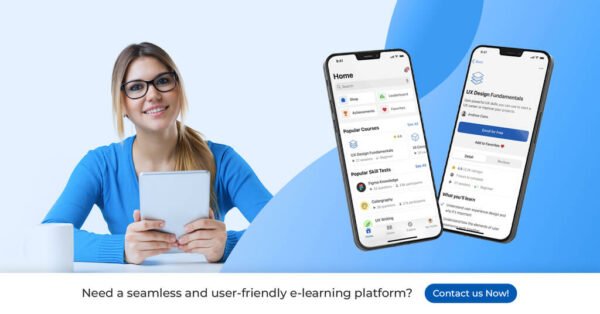
Another benefit of an on-demand e-learning app is its accessibility. Users can access educational content from anywhere in the world, as long as they have an internet connection. This makes it possible for learners in remote areas or developing countries to access quality education that would otherwise be unavailable to them.
Furthermore, an on-demand e-learning app has the potential to provide affordable education to millions of people around the world. Traditional education can be expensive, especially for those seeking higher education or professional development courses. An on-demand e-learning app could offer affordable courses and materials, making education accessible to more people.
In conclusion, an on-demand e-learning app has the potential to meet the needs of learners seeking flexibility and accessibility in their education. With a wide range of courses and materials, interactive features, and affordability, an on-demand e-learning app could revolutionize the way people learn and access education.
14. On-demand Flight Booking App
In recent years, travel culture has been on the rise, and with this trend comes the need for more convenient and accessible ways to book flights. An on-demand flight booking app is a great solution to this problem. This type of app can provide users with real-time flight information, including prices, availability, and flight schedules from various airlines. Users can also choose their preferred airlines and seats, as well as book their flights instantly through the app. This eliminates the need for users to spend hours searching for the best deals and comparing prices on different websites.
Moreover, an on-demand flight booking app can offer additional features such as airport guides and travel tips to help users plan their trips better. With airport guides, users can navigate through unfamiliar airports with ease by having access to maps and important information such as gate numbers and baggage claim locations. Travel tips can also be provided to users, such as advice on the best time to book flights or how to pack efficiently for their trip.
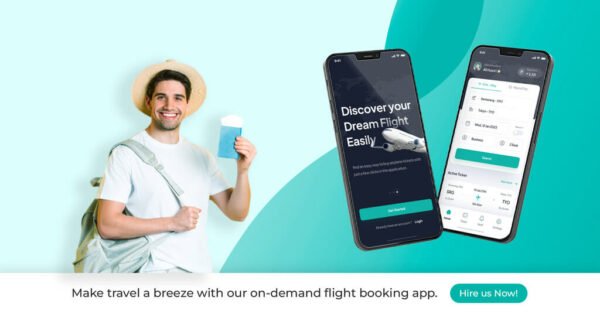
The potential user base for an on-demand flight booking app is significant, as people of all ages and backgrounds travel frequently for business or leisure. With the right marketing strategy, this app has the potential to attract a large number of users and generate significant revenue. In addition, partnerships with airlines and hotels can also be established to offer exclusive deals and discounts through the app.
In conclusion, an on-demand flight booking app is a great idea for entrepreneurs who want to tap into the growing travel market. By providing users with real-time flight information, additional features such as airport guides and travel tips, and exclusive deals and discounts, this app has the potential to become a go-to platform for travelers around the world.
15. On-demand Ridesharing Apps
Ridesharing apps have become one of the most popular on-demand app ideas in recent years. These apps have revolutionized the transportation industry by providing a convenient and affordable alternative to traditional taxi services. Ridesharing apps connect passengers with nearby drivers, making it easy for them to get from one place to another quickly and efficiently.
The success of ridesharing services like Uber and Lyft has paved the way for new entrants in the market. On-demand ridesharing apps can offer unique features that differentiate them from their competitors. For instance, they can provide carpooling options, which allow passengers to share a ride with others going in the same direction. This not only reduces the cost of transportation but also helps to reduce traffic congestion and carbon emissions.
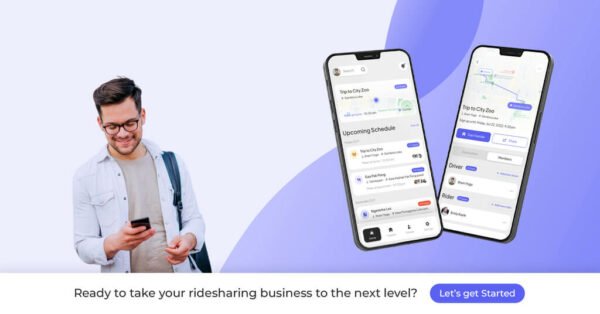
Luxury vehicle choices are another feature that on-demand ridesharing apps can offer. Passengers who want to travel in style can choose luxury vehicles like limousines, SUVs, or sports cars. These vehicles come with additional amenities such as Wi-Fi, entertainment systems, and refreshments.
Pet-friendly rides are yet another feature that on-demand ridesharing apps can provide. Many pet owners find it difficult to travel with their pets due to restrictions imposed by traditional taxi services. On-demand ridesharing apps can cater to this niche market by offering pet-friendly rides that allow passengers to travel with their furry friends.
To succeed in this competitive market, on-demand ridesharing apps must prioritize customer service, safety, and security. They should ensure that their drivers are well-trained and have undergone background checks. They should also have a robust rating system that allows passengers to rate their drivers after each ride. This helps to maintain high standards of service and ensures that passengers feel safe and secure during their journey.
16. On-demand Doctor Booking App
The on-demand doctor booking app is a mobile application that connects patients with healthcare providers in a hassle-free manner. Patients can book appointments with doctors at their preferred time and location, without having to wait in long queues or make multiple phone calls. The app can be a boon for patients who require immediate medical attention but cannot get an appointment with their regular physician due to unavailability or scheduling conflicts.
Moreover, the app can cater to the demand for apps that offer convenient access to healthcare services. Patients can easily find doctors who specialize in specific areas of medicine, such as cardiology, neurology, or gynecology. This feature can be particularly useful for patients who require specialized care and have a demand for such apps. Furthermore, the app can provide patients with detailed information about the doctors, including their qualifications, experience, and reviews from other patients, satisfying the demand for reliable information. In addition to healthcare services, the app can also cater to the demand for laundry services, allowing patients to easily find and book laundry services based on their location and preferences.

On-demand doctor booking apps can also benefit healthcare providers by streamlining their appointment scheduling process and reducing no-shows. Doctors can manage their schedules and availability through the app, making it easier for them to plan their day and avoid overbooking. Moreover, the app can send automated reminders to patients about their upcoming appointments, reducing the chances of missed appointments and last-minute cancellations.
Overall, on-demand doctor booking apps have the potential to revolutionize the healthcare industry by making healthcare more accessible and convenient for everyone. With the increasing adoption of mobile technology and the growing demand for telemedicine services, such apps are expected to gain popularity in the coming years.
17. On-demand Payment Wallet App
An on-demand payment wallet app is a versatile tool that can help users manage their finances with ease. It offers a range of features that simplify financial transactions and provide real-time updates on spending habits. One of the most significant advantages of an on-demand payment wallet app is its ability to link to multiple payment methods, including bank accounts, credit cards, and other digital wallets. This feature makes it easy for users to transfer money to other users, pay bills, and make purchases online or in-store.
Moreover, the app’s notifications feature allows users to keep track of their spending habits and stay within budget, making it a must-have for those who demand apps that can help them manage their finances. The app can also send alerts when a user’s balance falls below a certain threshold or when a transaction exceeds a specified amount, which is especially useful for those who demand insurance against overdraft fees and other unnecessary charges.
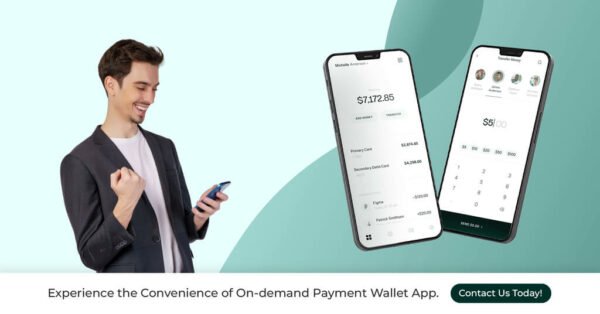
Another benefit of an on-demand payment wallet app is its security features. The app uses encryption technology to protect user data and prevent unauthorized access to their accounts. Additionally, some apps offer two-factor authentication, which requires users to enter a code sent to their phone or email before accessing their account.
In conclusion, an on-demand payment wallet app is an excellent tool for anyone looking to streamline their financial transactions. It offers convenience, versatility, and security, making it an essential tool for managing finances in today’s fast-paced world.
18. On-demand Car Wash App
An on-demand car wash app is a great solution for individuals who lead busy lives and are always on the go. It offers a convenient way for car owners to have their vehicles cleaned without having to take time out of their busy schedules to do it themselves. By simply downloading the app, users can easily request a professional car wash service to come to their location at a time that suits them best. This app idea is particularly useful for those living in urban areas where time is of the essence, and people are always looking for ways to save time and effort.
In addition to regular car washing, an on-demand car wash app can offer additional services such as interior cleaning, waxing, and detailing. These services can be customized according to the user’s preferences and requirements. For instance, some users may want a quick exterior wash while others may prefer a more thorough cleaning that includes both exterior and interior detailing. With these additional services, an on-demand car wash app can attract more customers and generate more revenue.
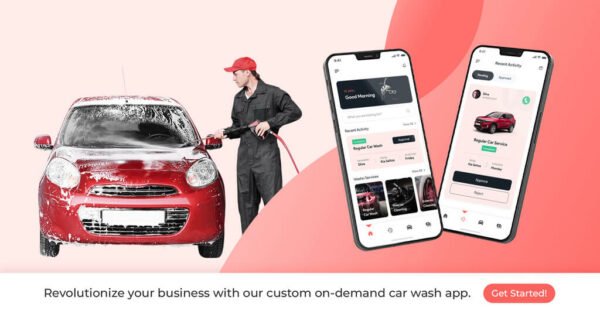
To make an on-demand car wash app successful, it’s important to focus on marketing and user-friendly features. The app should be easy to use with a simple interface that allows users to quickly request services and track their orders. Additionally, marketing efforts should target busy individuals who are looking for ways to save time and effort. Social media platforms like Facebook, Instagram, and Twitter can be used to promote the app and reach potential customers.
Overall, an on-demand car wash app has great potential as a profitable business venture. With its convenience and flexibility, it’s sure to attract a large customer base in urban areas where people are always looking for ways to make their lives easier. By offering additional services and focusing on marketing efforts, an on-demand car wash app can become a successful business in no time.
19. On-demand Laundry Apps
On-demand laundry apps have become a popular choice for busy individuals who are looking for convenient and time-saving solutions. These apps offer a range of benefits that make them an attractive option for people with hectic schedules. One of the biggest advantages of on-demand laundry apps is that they allow users to schedule a pickup and drop-off time for their laundry, eliminating the need to spend hours at the laundromat. This means that users can focus on their work or other important tasks while their laundry is being taken care of.
Moreover, with the rise of eco-conscious consumers, some on-demand laundry apps have started offering eco-friendly cleaning options. These options use non-toxic and biodegradable cleaning agents that are gentle on clothes and the environment. This is a great selling point for environmentally conscious individuals who want to reduce their carbon footprint.

Another benefit of on-demand laundry apps is that they can also benefit small business owners who may not have the resources to maintain an in-house laundry service. These apps can provide a cost-effective solution for business owners who need to keep their uniforms or linens clean and fresh.
Overall, the on-demand laundry app market has great potential for growth as more people look for ways to simplify their daily tasks. With the convenience and time-saving benefits that these apps offer, it’s no surprise that they have become increasingly popular in recent years. As technology continues to evolve, we can expect to see even more innovative features added to these apps in the future.
20. On-demand Insurance App
An on-demand insurance app is a digital platform that offers users the convenience of accessing insurance coverage anytime and anywhere. This app could cater to various insurance needs, including travel insurance for vacations, event insurance for weddings, or even pet insurance. Users can purchase insurance policies tailored to their specific requirements and budget. The app could also provide users with the flexibility to customize their coverage options and adjust the policy duration as per their needs.
One of the significant advantages of an on-demand insurance app is its quick and straightforward claims process. Users can file claims directly through the app, eliminating the need for lengthy paperwork or phone calls. They can also track the status of their claims and receive payouts directly through the app, making the entire process hassle-free.
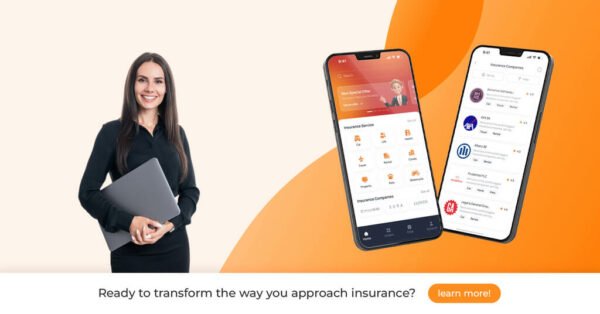
Moreover, an on-demand insurance app could offer additional features such as 24/7 customer support, live chat with insurance agents, and personalized policy recommendations based on user data. These features can enhance user experience and build trust with the app’s brand.
In conclusion, an on-demand insurance app is a valuable addition to the market as it provides users with a convenient and flexible way to access insurance coverage. With its user-friendly interface and quick claims process, this app has the potential to disrupt the traditional insurance industry and cater to the growing demand for digital services.
How Much Does it Cost to Build an On-demand Service App?
If you have a brilliant on-demand app idea, the next question that comes to your mind is how much does it cost to build an on-demand service app? The answer is not straightforward as the cost of developing an on-demand service app depends on various factors. In this article, we will discuss the factors that affect the cost of building an on-demand service app and provide you with a rough estimate.
Factors that Affect the Cost of Building an On-Demand Service App
The complexity of your on-demand service app plays a significant role in determining app development cost. A basic app with limited features will cost less than a complex app with advanced features. For instance, if you want to develop an Uber-like taxi booking app, it will require more features like real-time tracking, payment gateway integration, and push notifications than a simple food delivery app.
The number and type of features required in your on-demand service app also affect its development cost. Basic features like user registration, search functionality, and order placement are relatively simple to implement and will not add significantly to your development costs. However, advanced features like real-time tracking or chat functionality can increase your development costs significantly.
Another factor that affects the cost of building an on-demand service app is platform choice. If you want to develop your app for both iOS and Android platforms simultaneously, it will increase your development costs compared to developing for only one platform.
Finally, where you choose to hire your development team can also impact the overall cost of building an on-demand service app. Hiring developers from countries like India or Ukraine can save up to 60% compared to hiring developers from Europe or North America.
Rough Estimate for Building an On-Demand Service App
Now that we have discussed the factors affecting the cost of building an on-demand service app let’s provide you with a rough estimate.
The cost of developing a basic on-demand service app for a single platform can range from $10,000 to $50,000. If you want to develop an app for multiple platforms like iOS and Android, the cost can increase up to $100,000 or more. However, these are just ballpark figures, and your actual costs may vary depending on the factors discussed above.
Advanced features like real-time tracking, push notifications, and payment gateway integration can add up to the cost of development. For instance, integrating payment gateways like Stripe or PayPal in your on-demand service app will require additional development efforts that will add up to your overall costs.
How Much Time Does It Take to Develop an On-demand Application?
Developing an on-demand application requires a significant amount of time and effort. The development time for such an app depends on various factors, including the complexity of the app, the features required, and the platform it is built on. In this article, we will discuss how much time it takes to develop an on-demand application.
Development Time for a Basic On-demand App
On average, it takes around 4 to 6 months to develop a basic on-demand app with standard features. A basic on-demand app typically includes features such as user registration, service selection, booking management, payment processing, and push notifications.
The development process involves several stages such as ideation, design, development, testing, and deployment. During the ideation stage, the team brainstorms ideas and creates a plan for the project to meet the demand for apps. Once the plan is in place, designers work on creating wireframes and prototypes that define the look and feel of the app according to demand apps. Developers then use these designs to build out the functionality of the app to meet the demand for apps.
After development is complete, rigorous testing is carried out to ensure that all features are working correctly and meeting the demand of users for apps. Once all bugs have been fixed and everything is functioning smoothly, the app can be deployed to satisfy the demand of users for apps.
Development Time for Advanced On-demand Apps
If an on-demand app requires advanced features such as real-time tracking, payment gateways, or chat support; development time may increase significantly. Developing an advanced on-demand app can take up to 9-12 months.
Real-time tracking through demand apps allows users to track their service providers in real time while they are en route to their location. Payment gateways within the demand apps enable secure transactions between users and providers within the app itself. Chat support through demand apps provides a direct line of communication between users and service providers or customer support representatives.
Adding these advanced features to meet the demand for apps increases both complexity and development time significantly since developers must integrate third-party APIs into their codebase while also ensuring that the app remains stable and secure.
Factors Affecting Development Time
The development time for an on-demand app can vary based on the experience and expertise of the development team working on the project. If a team has prior experience in developing similar applications, they may be able to complete the project faster than a team with no such experience.
Another factor affecting development time is the demand for apps on the platform on which it is built. Developing an app for iOS takes less time compared to Android since Apple’s ecosystem is more standardized, whereas Android has many different devices with varying screen sizes and capabilities, making it challenging to meet the increasing demand for apps.
Lastly, it is important to have a clear understanding of the requirements and scope of the mobile app idea project before starting development. This helps ensure timely delivery and prevents scope creep, which can significantly increase development time. It is also important to consider the demand apps for the monitoring app or shopping app to make sure that the app will be well-received by users.
The FAQ section is essential for on-demand apps to help users understand how the app works and how it can help them with their demand for services, products, or jobs. On-demand apps can provide a wide range of services such as food delivery, care services, travel planning, shopping assistance, and more, making it easier for users to get what they need with just a few taps on their mobile devices. Here are some frequently asked questions about creating an on-demand app:
How do you create an on-demand app?
Creating an on-demand app requires a team of skilled developers who have experience in building similar applications. The first step is to identify the target audience and the type of service that the app will offer. Once you have decided on these factors, you need to plan out the features and functionalities that your app will have.
The next step for meeting the demand of apps is to design the user interface (UI) and user experience (UX) of your app. This involves creating wireframes and prototypes that showcase how your app will look and function. After finalizing the design, you can move onto developing the front-end and back-end of your application.
Once development is complete, you need to thoroughly test your demand apps before launching them in the market. You should also ensure that your applications comply with all legal requirements related to data privacy and security.
What are some examples of the best on-demand service apps?
There are several successful on-demand service apps in various industries such as food delivery (Uber Eats), ride-sharing (Uber), home cleaning (Handy), pet care (Rover), beauty services (GlamSquad), grocery delivery (Instacart), healthcare (ZocDoc), laundry services (Rinse), and many more.
These apps provide convenience for users by allowing them to access services quickly without having to leave their homes or offices. They also offer competitive pricing models that make them attractive alternatives to traditional service providers.
How much time does it take to develop an on-demand service app?
The development time for an on-demand service app can vary depending on the complexity of the application and the features that you want to include. Typically, it takes around 4-6 months to develop a basic version of an on-demand app. However, if you want to include advanced features such as real-time tracking, push notifications, and payment gateways, it may take longer.
It is important to note that development time for a mobile app idea also depends on the team’s size and expertise. A larger team with more experience can complete the delivery app or shopping app project faster than a smaller team with less experience, especially for in-demand apps like these.
How much does it cost to build an on-demand services app?
The cost of building an on-demand services app varies based on several factors such as development time, complexity of features, design requirements, platform compatibility (iOS or Android), and more. On average, developing a basic version of an on-demand service app can cost between $30,000-$50,000.
However, if you want to develop high-demand apps with advanced features such as real-time tracking or integration with third-party services like Google Maps or PayPal, the cost can go up significantly. It is recommended that you consult with experienced developers who specialize in building similar-demand apps before finalizing your budget.
Ready to Choose the Successful On-demand App Idea?
After exploring the list of 20 on-demand mobile app ideas, you might be wondering how much it will cost and how long it will take to develop your chosen idea. The good news is that there are many factors that can influence these costs and timelines, including the complexity of your app, its features, and the platform you choose.
When creating apps that cater to the demand of users, there are a few essential elements that you should consider. First, ensure that your app provides a unique value proposition for users. This could be anything from offering a new service or product to providing faster delivery times or more personalized experiences.
Secondly, focus on creating an intuitive user interface that is easy to navigate and use, as per the demand of apps. Your app should also offer robust security features to protect user data and build trust with your audience.

Finally, invest in marketing efforts to promote your app and attract new users to meet the demand for apps. This can include social media advertising, influencer partnerships, and search engine optimization strategies.
In terms of cost and time investment, building an on-demand service app can range anywhere from several thousand dollars to millions of dollars depending on various factors such as development team size/location/experience level/technology stack used/etc., feature set requirements, project complexity level, etc. Similarly, the development timeline can vary from several months to over a year depending upon similar aforementioned factors.
To make sure you’re making informed decisions when choosing an on-demand app idea for your business venture, review our FAQ section below where we’ve answered some commonly asked questions about developing an on-demand application.
So what are you waiting for? Start brainstorming unique ideas for your own on-demand mobile application today! With careful planning and execution along with continuous improvement based on user feedback – success is just around the corner!
